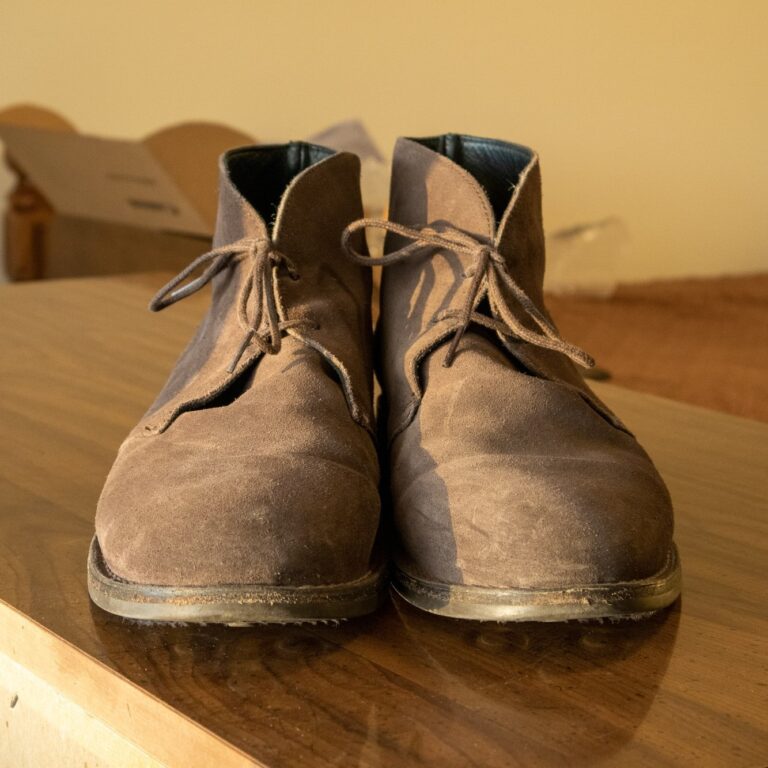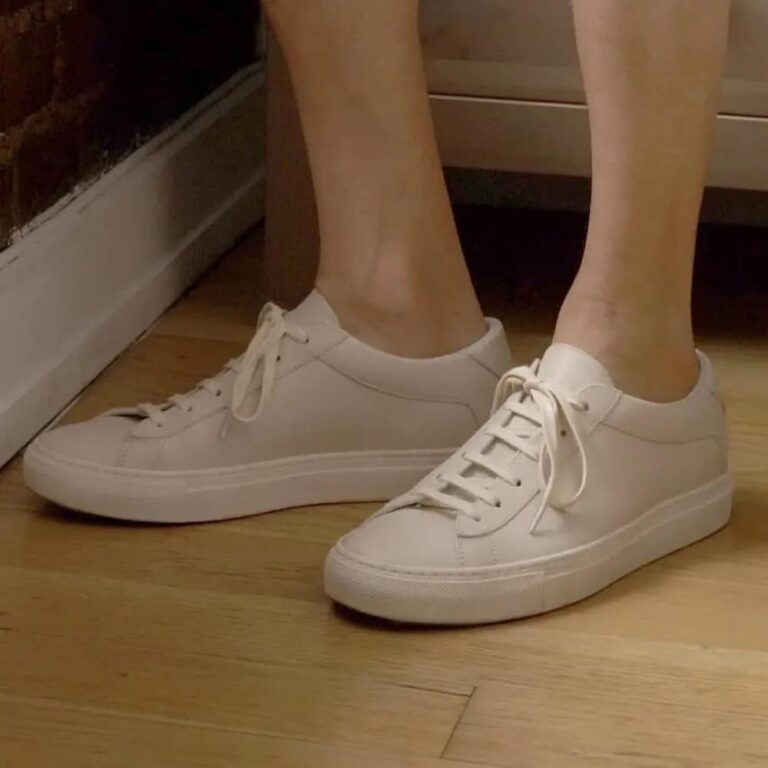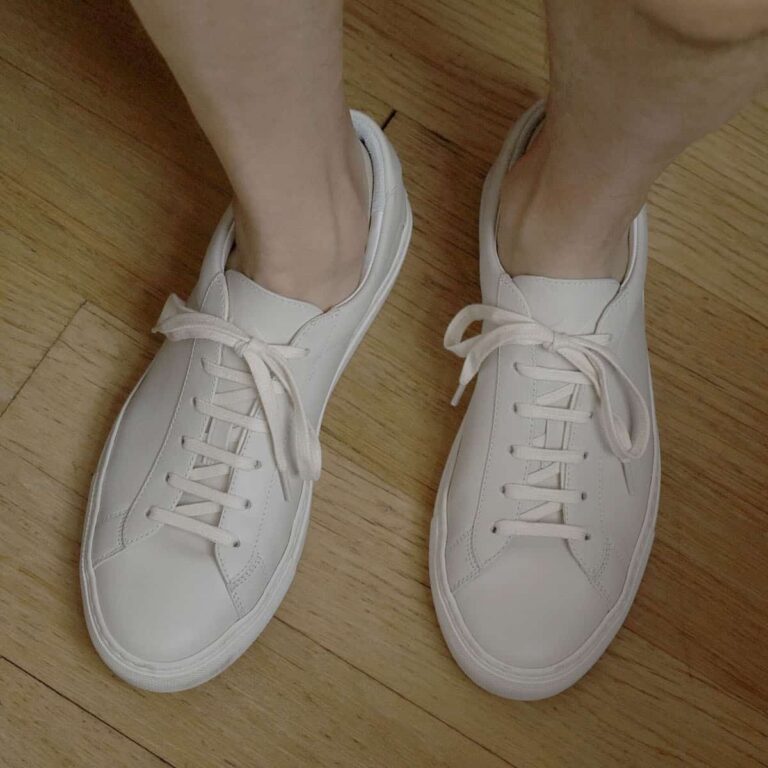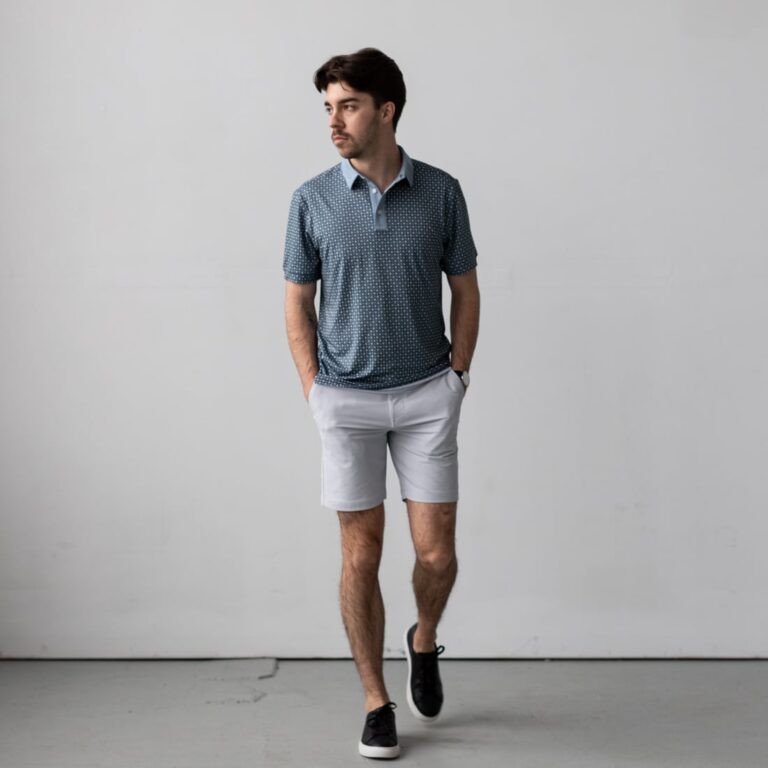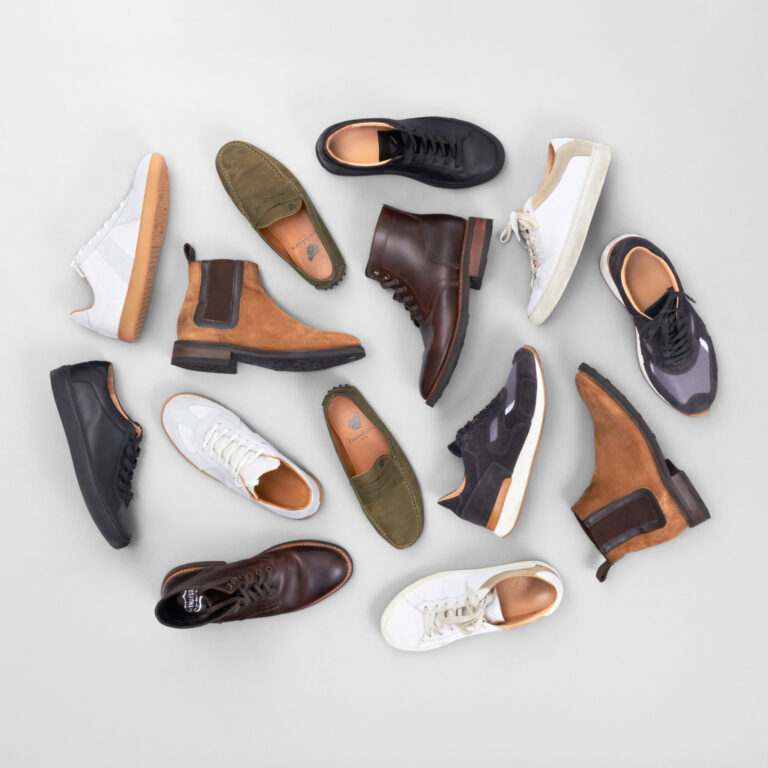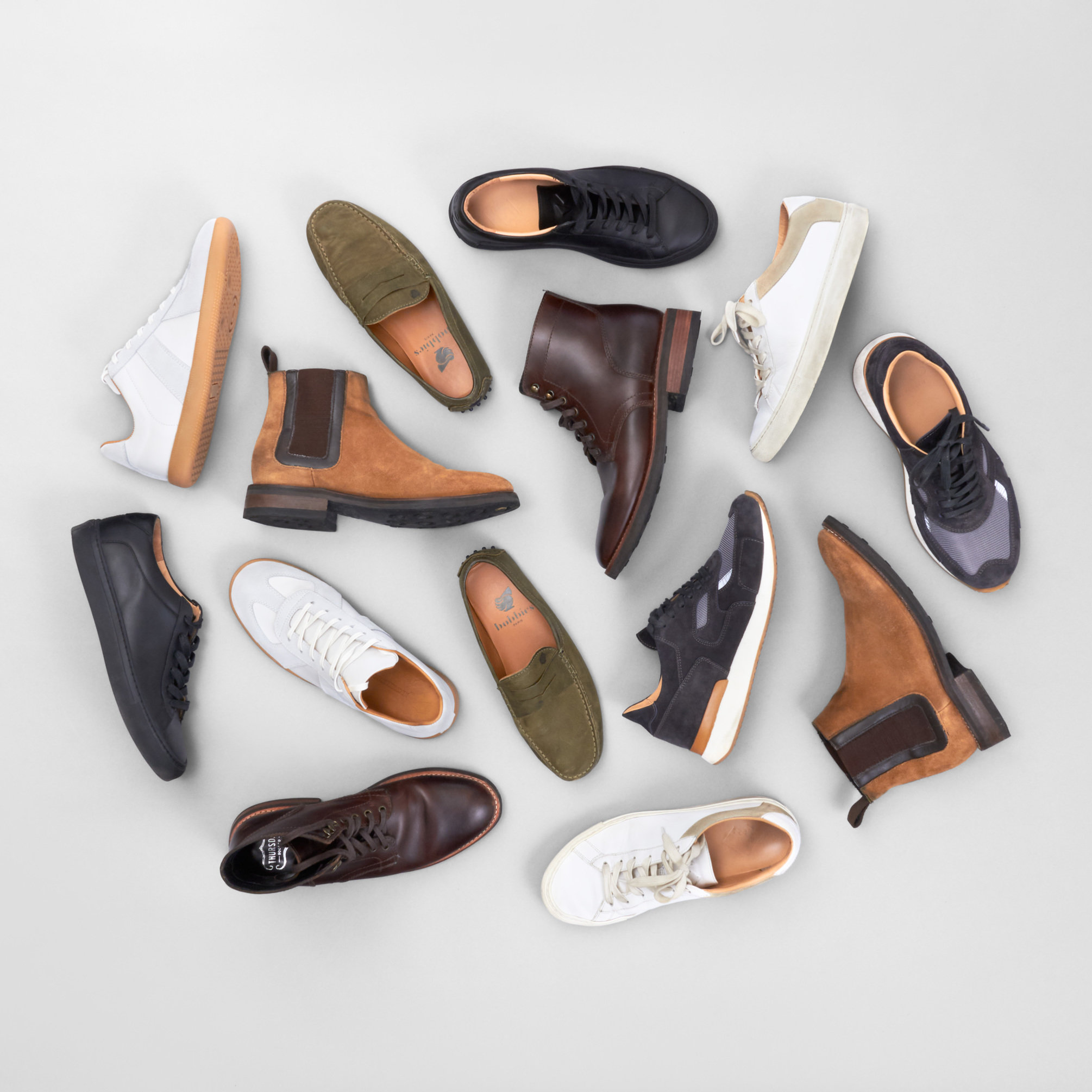
Looking for a better way to store your shoe collection? Read on for the best shoe storage methods you can use.

You come home after a long day and take off your shoes. Where do you put them? The average Joe throws them into a jumbled pile by the front door.
Guys, there is a better way.
Quality footwear is an investment and your shoes and boots will last longer if properly stored (and as an added bonus your house will look tidier too!).
First we’ll go over special considerations for storing different types of shoes and then we’ll examine different shoe storage / organization options for home and for travel.
Store Your Shoes Properly (Why it Matters)
When your shoes are haphazardly left out in the open they are more likely to get beat up. You might trip over them, scuffing, staining, or otherwise damaging them in the process.
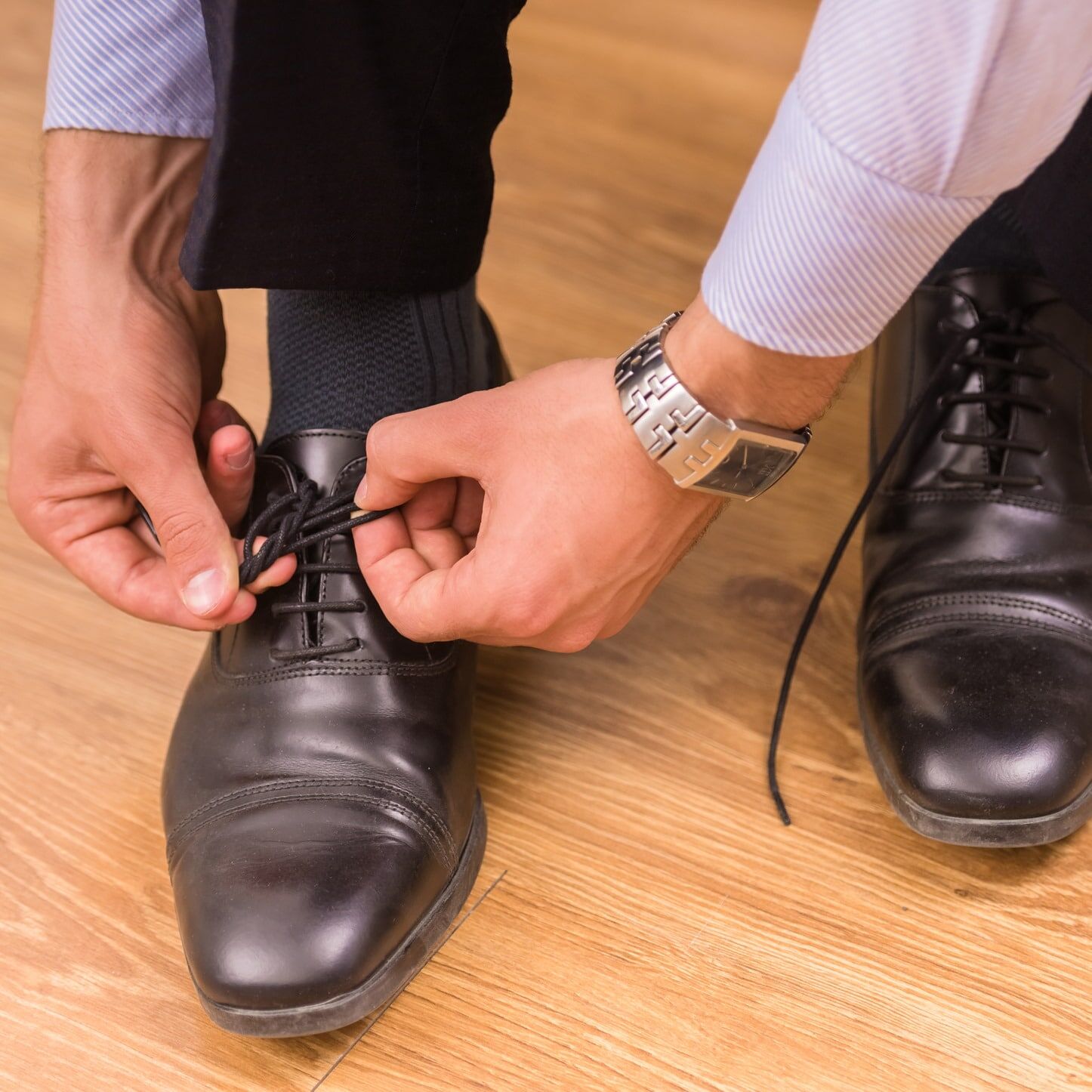
Also, if you have pets or small children, they are more likely to mess with your shoes when they’re out in the open.
Another concern, especially for dress shoes, is dust and dirt accumulating over the top layer of polish, which can dull their finish and potentially cause micro scratches.
Besides keeping your shoes in good condition, properly storing your shoes helps you to stay organized. Getting out the door is easier when everything is neatly stored in the same place every day.
Storing Different Types of Shoes (What You Should Know)
Here are some things to consider when storing different types of shoes.
How to Store Athletic Shoes
By “athletic shoes” I don’t mean designer leather high tops. I’m referring to shoes that you wear when you are actually exercising.
When storing athletic shoes, your main concern is going to be how dirty and smelly they can get.
If your shoes are especially dirty, you can wash them with a clean towel or washcloth and a solution of water and dish soap.
If your
If your athletic shoes tend to develop an unpleasant odor, hit ’em with some Odor-X.
How to Store Casual Shoes and Boots
This category includes casual non-athletic sneakers, canvas, suede, and leather shoes and boots.
Casual shoes don’t need as much care and attention as dress shoes, however they still need to be properly maintained and stored.
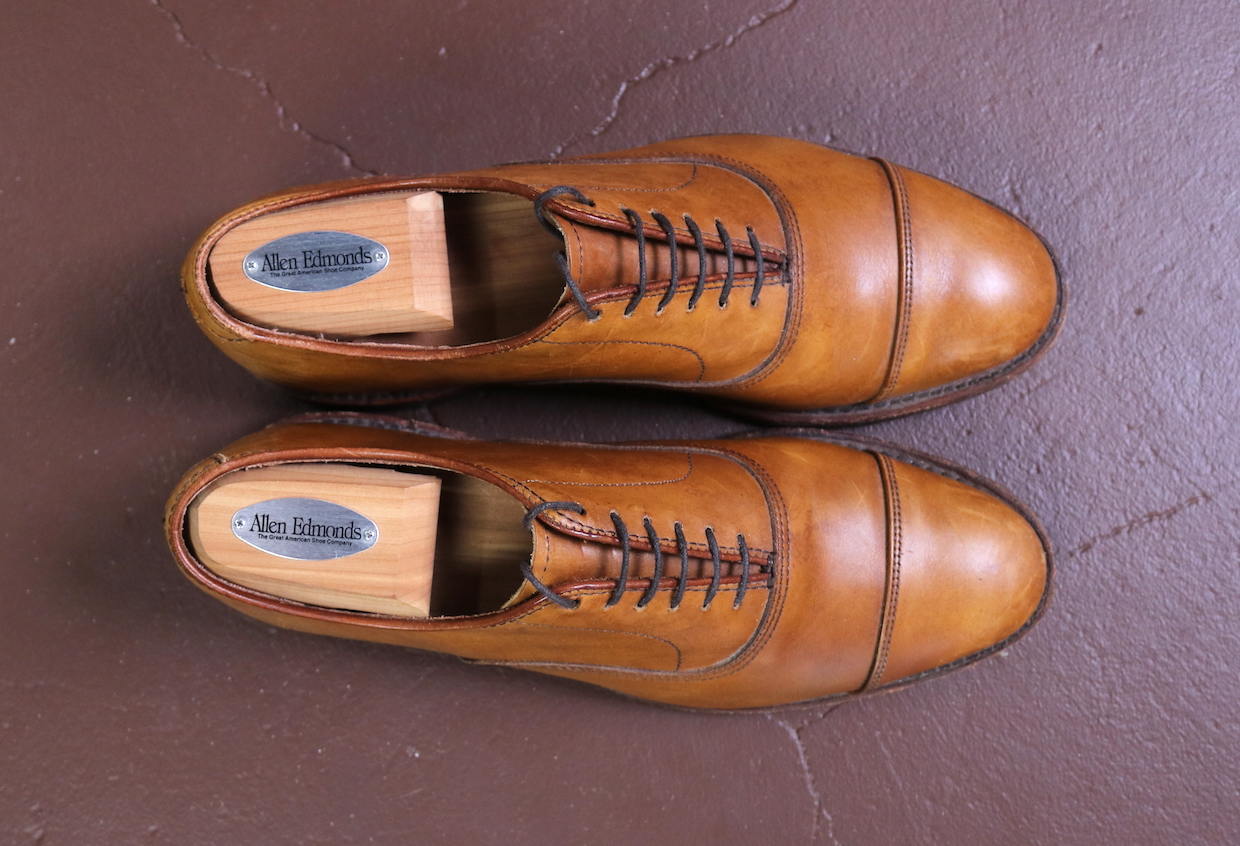
Leather shoes and boots should always be stored with shoe trees inserted. Shoe trees maintain the shape of the shoe, help to suck out moisture, and can help reduce odors. If you don’t have shoe trees yet you can stuff newspaper or paper towels into your shoes to get similar benefits.
Again, making sure your shoes and boots are clean before storing is especially important for casual footwear because they are likely to be worn in situations in which they’ll get a little dirty. At a minimum, go over casual shoes with a brush before storing to knock off any loose dirt or grime.
How to Store Dress Shoes and Dress Boots
Taking the effort to store dress shoes and boots well is vital. You should maintain shine, prevent them from excessive exposure to damaging UV rays, and keep them from getting dusty between wears.
Having a regular routine for shoe maintenance is especially important for dress shoes and boots. Many men find that inspecting their dress shoes as soon as they take them off, brushing and / or shining if necessary, is a good “no brainer” system.

If you don’t wear a particular pair of shoes very often (for a lot of guys this will be black oxfords), store them in a bag, box, or another type of closed container.
However, try to avoid storing leather shoes in plastic bags, as the plastic doesn’t allow the leather to “breathe,” which, over prolonged periods of time, can be harmful to your shoes.
How to Store Specialty Footwear
What do rock climbers, organists, soccer players, and firefighters all have in common?
They all use specialty footwear.
There are dozens, if not hundreds, of different types of specialty shoes. Specialty footwear may require other specific storage considerations.
As usual, follow instructions from the manufacturer. If you have specific questions or concerns, ask around and learn how leaders in your sport or industry maintain and store their specialty shoes.
How to Store Shoes at Home
Storing shoes at home doesn’t have to be hard. Even if you have dozens of pairs of shoes and a small living space, there are storage solutions that can help keep your shoes organized and damage free.
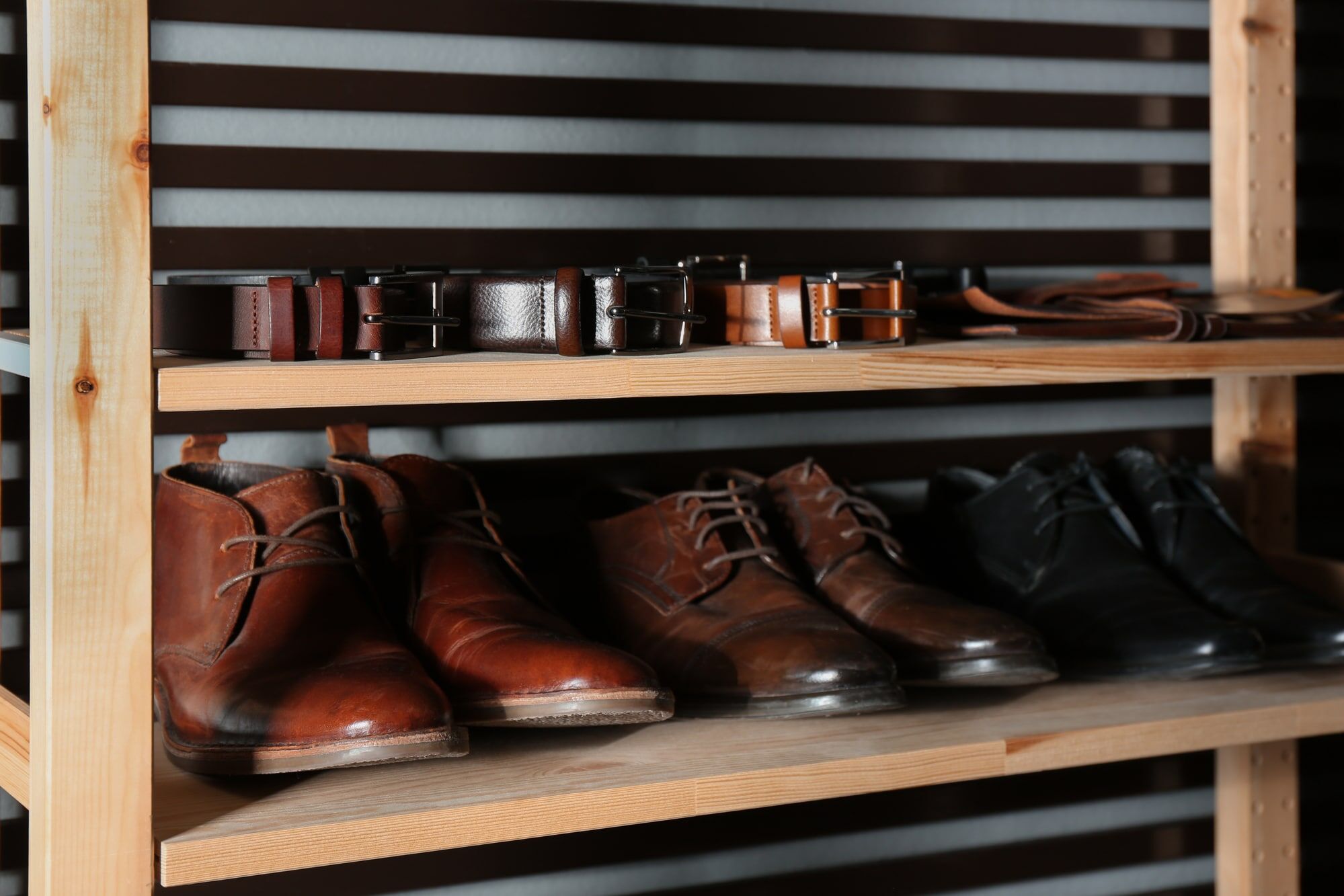
After being worn, ideally shoes should be cleaned and stored in a dry place away from direct sunlight. Having your shoes well organized and kept safe from curious pets and small children. Thus, storing shoes in closets or under the bed are good options.
There are so many ways to store shoes and with thousands of products on the market designed to help people store their shoes at home, it’s not possible to cover everything here. Here are just a few of the most common types of home shoe storage solutions.
Storing Shoes Under the Bed
Arranging your shoes under the bed is one of the most common ways to store shoes at home. However, it is not ideal.
The reason is because you shed skin when you sleep, which becomes dust (pretty gross, I know). This dust isn’t good for your shoes.
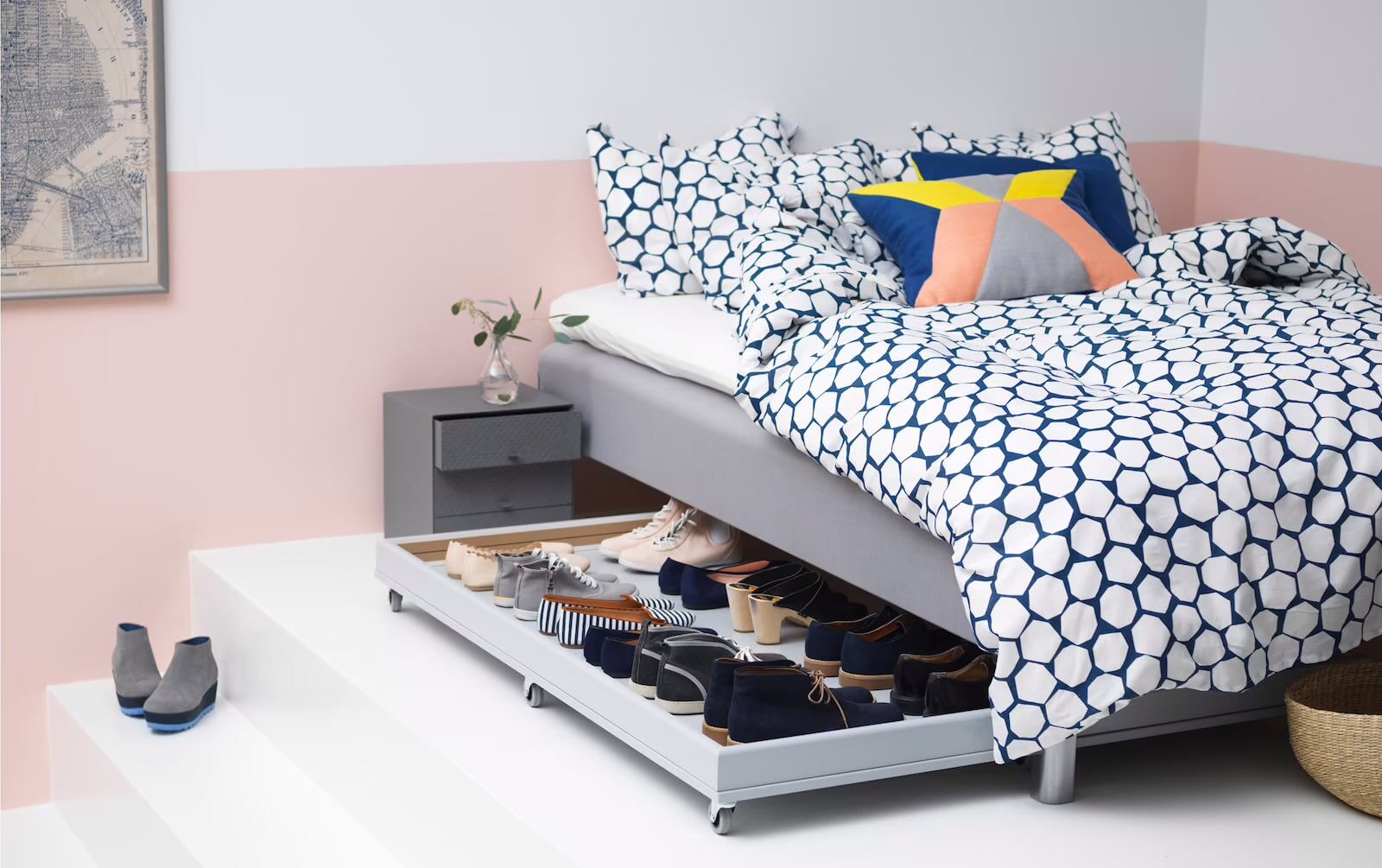
While probably not much of a problem for shoes that you wear all the time, pairs that don’t see much use are going to get dusty quickly.
Instead of leaving your shoes out in the open under your bed, you should consider storing them in some kind of container to block out the dust (in bags, boxes, plastic containers, etc.).
Storing Shoes on Racks
Racks are great for storing shoes in closets and near entryways.
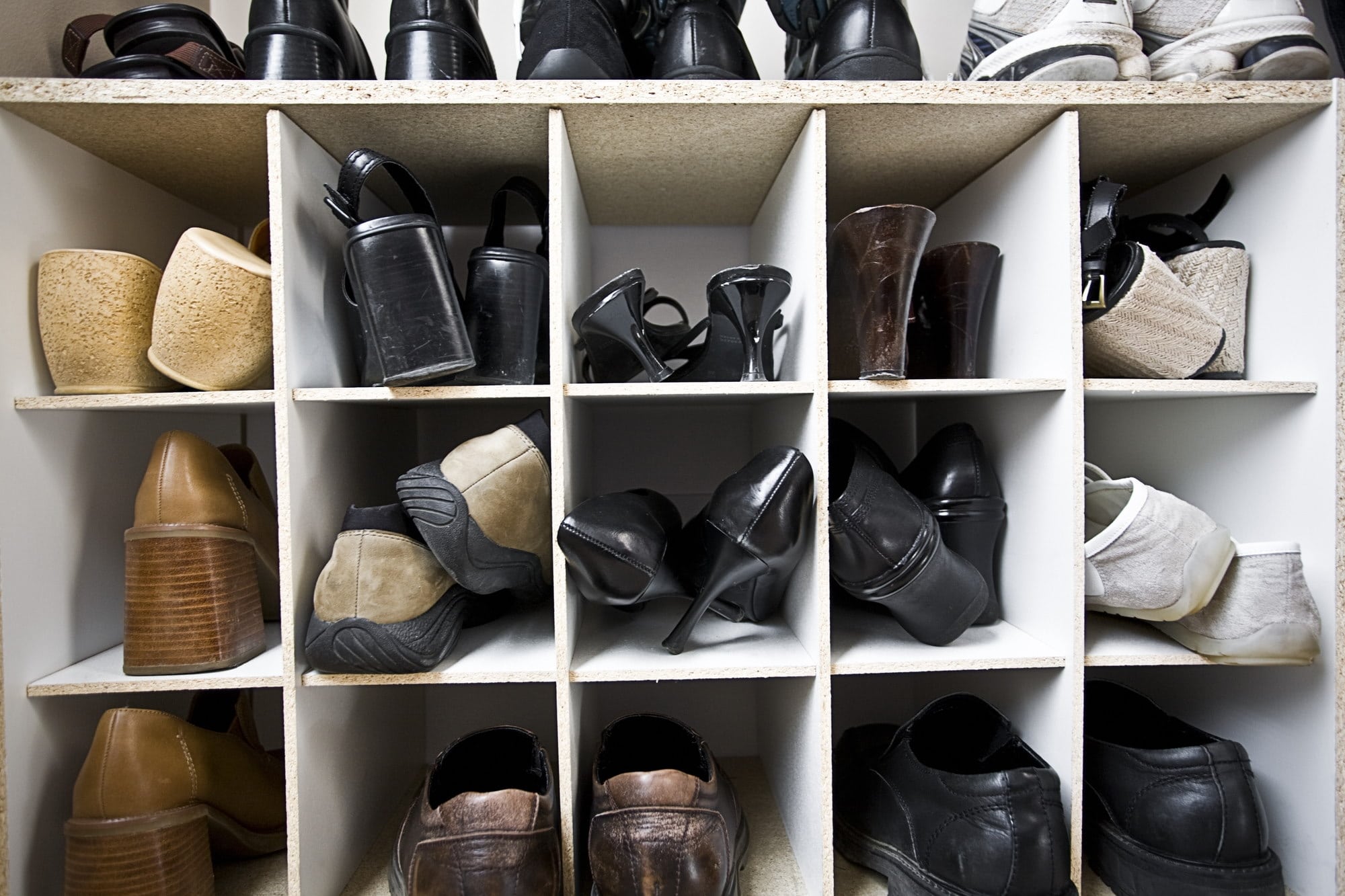
A lot of people underestimate the amount of shoes that they have, resulting in racks filled to overflowing. Make sure to have enough rack space for all of your shoes and be sure to leave some empty space for when you get new kicks, or, if it’s a rack near an entryway, for when you have guests over.
Using Hanging Shoe Organizers
Hanging shoe organizers can be a lifesaver if you don’t have much floorspace to work with.
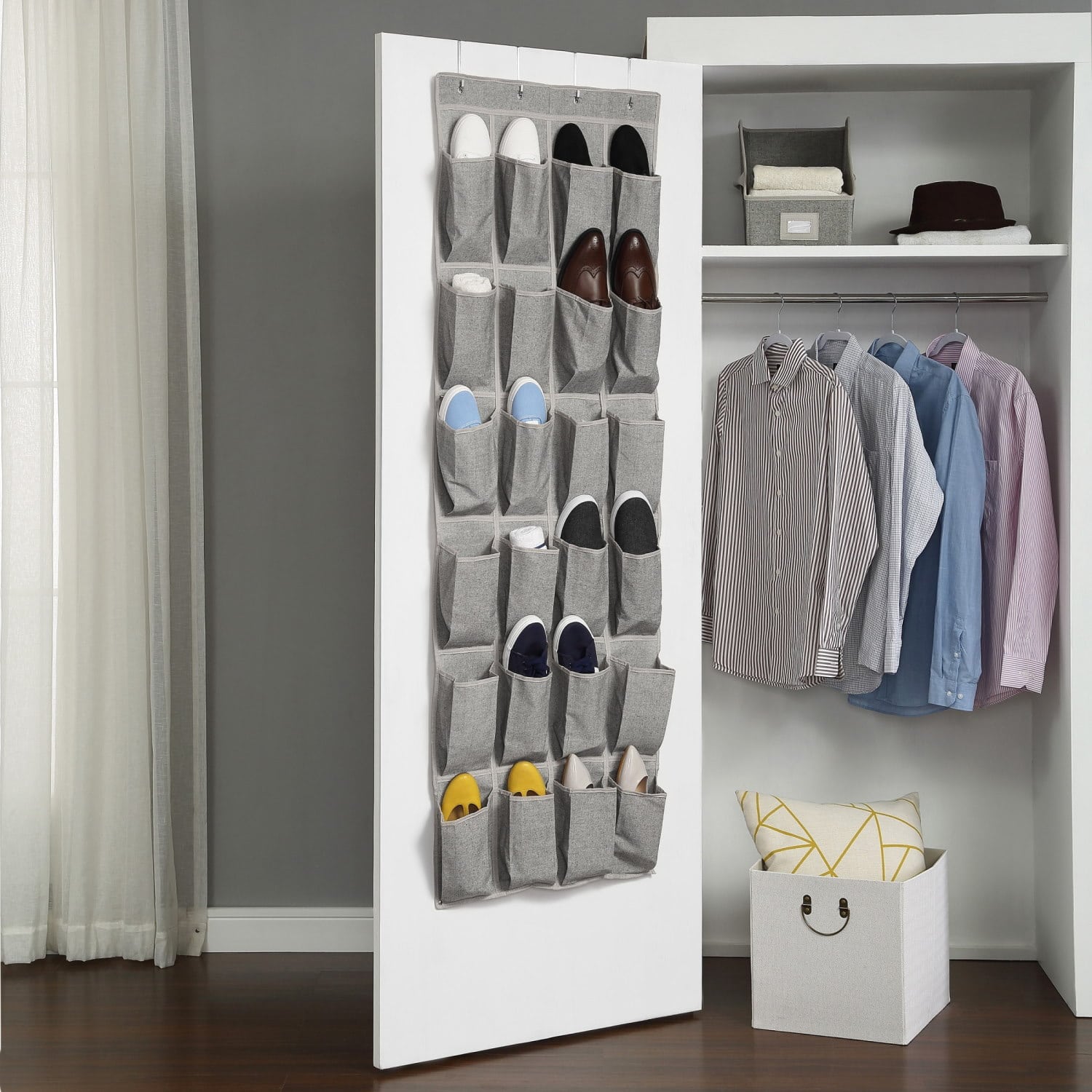
One drawback of this storage method is that if you have a lot of shoes, they might not all fit on one door. Also, the shoe organizer can move around when you open and close the door which can be annoying.
Storing Shoes in Boxes
Storing shoes in their boxes is perhaps the best option when it comes to protecting your shoes while not in use. Shoeboxes are also helpful because they can be easily stacked on the floor or on a shelf.

That said, they aren’t always practical to use. If you live in a wet environment, you’ll need to dry out your shoes before storing them in a cardboard box. Additionally, it’s not very convenient to have to play “shoebox Jenga” when you’re in a hurry to get out the door.
Shoeboxes are best for long term storage.
Shoe Mats
If you live in a wet and muddy place, a shoe mat might be your only practical option for storing shoes that you wear regularly.
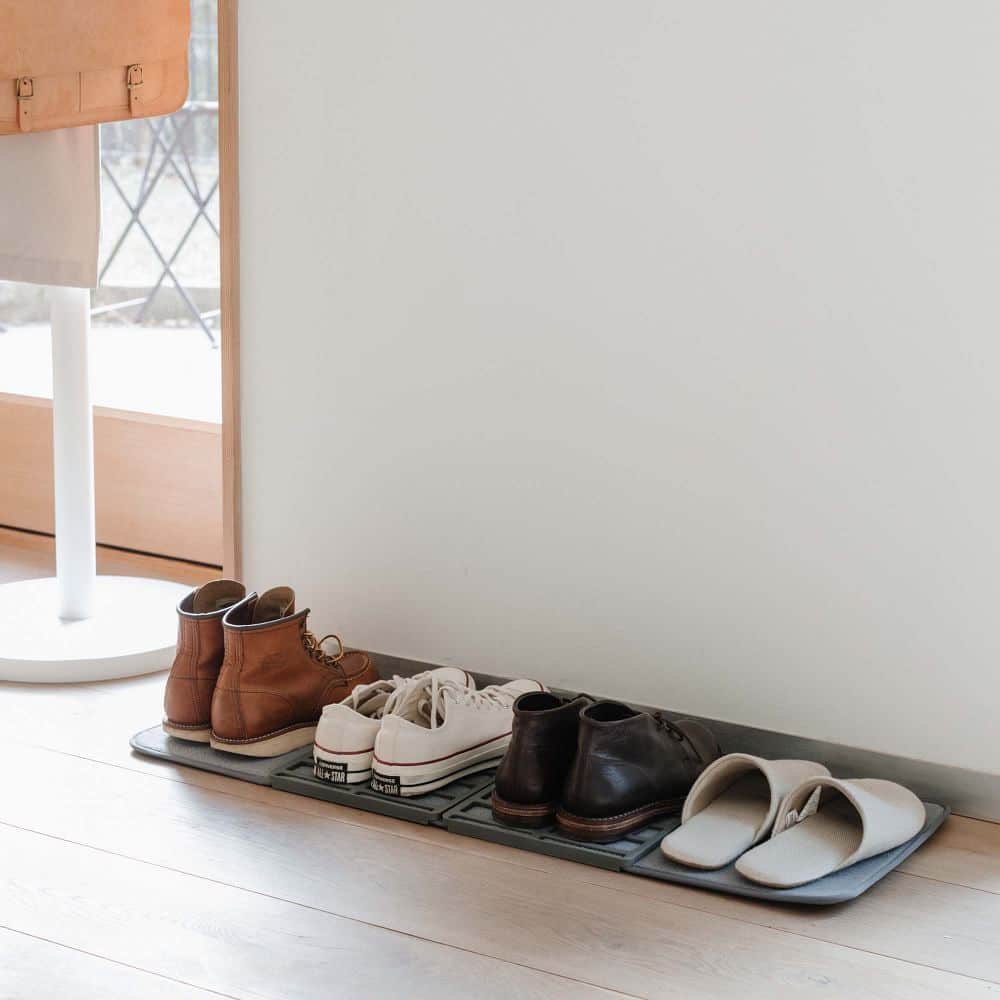
A grooved rubber mat will allow shoes to dry out without getting water on your floor.
How to Store Shoes when Traveling
When you’re packing for your trip you might not take much thought as to how you store your shoes. However, if you get this wrong the consequences can be stressful (or even catastrophic). You risk harming your shoes and your other belongings, as well as unnecessarily spreading foul odors.
When packing shoes for travel there are three main guidelines:
First, make sure that your shoes are clean. No matter how you store your shoes when traveling, clean shoes just makes things easier.
Second, have a layer of protection between your shoes and your other items. The easiest way to accomplish this is to place your shoes in a protective shoe bag or a box. In a pinch, a plastic bag works fine.
My personal “system” is to pack casual or athletic shoes in plastic bags and individually wrap clean dress shoes in old t-shirts.
Third, avoid packing shoes near items that might damage them. Unless they’re stored in a hard box or case of some kind, even with a protective barrier shoes can still get nicked (or worse) when packed for travel.
This is an especially common problem when a bag is overpacked. To reduce the chances of your shoes sustaining travel “battle wounds,” keep them away from hard objects that might press against them as your bag moves.
I’ve found that packing shoes towards the top of my suitcase helps to avoid mishaps. Many overnight bags have special built-in shoe compartments.
Use them. Even with this feature to isolate dirt and odors, it’s best to make sure your shoes are clean.
Tip: A travel-sized shoe horn is an inexpensive, yet helpful tool to stash in your luggage.
Follow these three simple rules and you can travel without worrying about your shoes. (Honestly, I hope you’ve never worried about your shoes while traveling– that’s just lame).
Conclusion
After you have your shoe storage systems in place, keeping your shoes organized will be effortless.
How do you store your shoes? Let us know in the comments!
